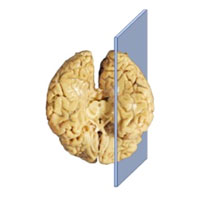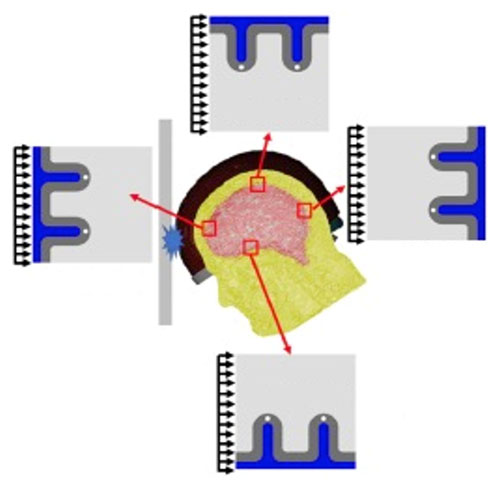Contact Us!
For more information on the Fan Flow Integrated Research Laboratory, contact Dr. Lei Fan.
Report a Problem
To report a problem with this website, contact BME Communications, or report an accessibility issue.
 Traumatic brain injury remains a leading cause of injury and mortality in the United States. In 2021, the Center for Disease Control estimated over 69,000 TBI related deaths in the United States alone. While incredible advancements have been and continue to be made in our understanding of the progression of traumatic brain injury during recovery, the mechanical properties of brain tissue after damage remain poorly understood.
Traumatic brain injury remains a leading cause of injury and mortality in the United States. In 2021, the Center for Disease Control estimated over 69,000 TBI related deaths in the United States alone. While incredible advancements have been and continue to be made in our understanding of the progression of traumatic brain injury during recovery, the mechanical properties of brain tissue after damage remain poorly understood.
 The F2IRL seeks to develop a computational modeling framework to elucidate the constitutive behavior of brain tissue in healthy and damaged states, with a particular focus on brain tissue damaged by blunt force trauma. With this project, the F2IRL hopes to provide a multi-level, multi-physics computational model of brain tissue physiology that will help to assist the diagnosis and treatment of any number of brain-related pathologies.
The F2IRL seeks to develop a computational modeling framework to elucidate the constitutive behavior of brain tissue in healthy and damaged states, with a particular focus on brain tissue damaged by blunt force trauma. With this project, the F2IRL hopes to provide a multi-level, multi-physics computational model of brain tissue physiology that will help to assist the diagnosis and treatment of any number of brain-related pathologies.

Top Left: Posterior view of the brain with sagittal plane transecting the left hemisphere
Middle: Graphic depicting blood flow patterns of the brain (simplified)
Bottom: Blunt force trauma to the frontal lobe, with blood flow observations taken of the frontal, temporal, parietal and occipital lobes
Whether seasoned researcher, advanced student or curious undergrad, the Fan Flow Integrated Research Laboratory has opportunities for innovators of all types. For further information on current opportunities to get involved with the F2IRL, contact Principal Investigator Dr. Lei Fan.